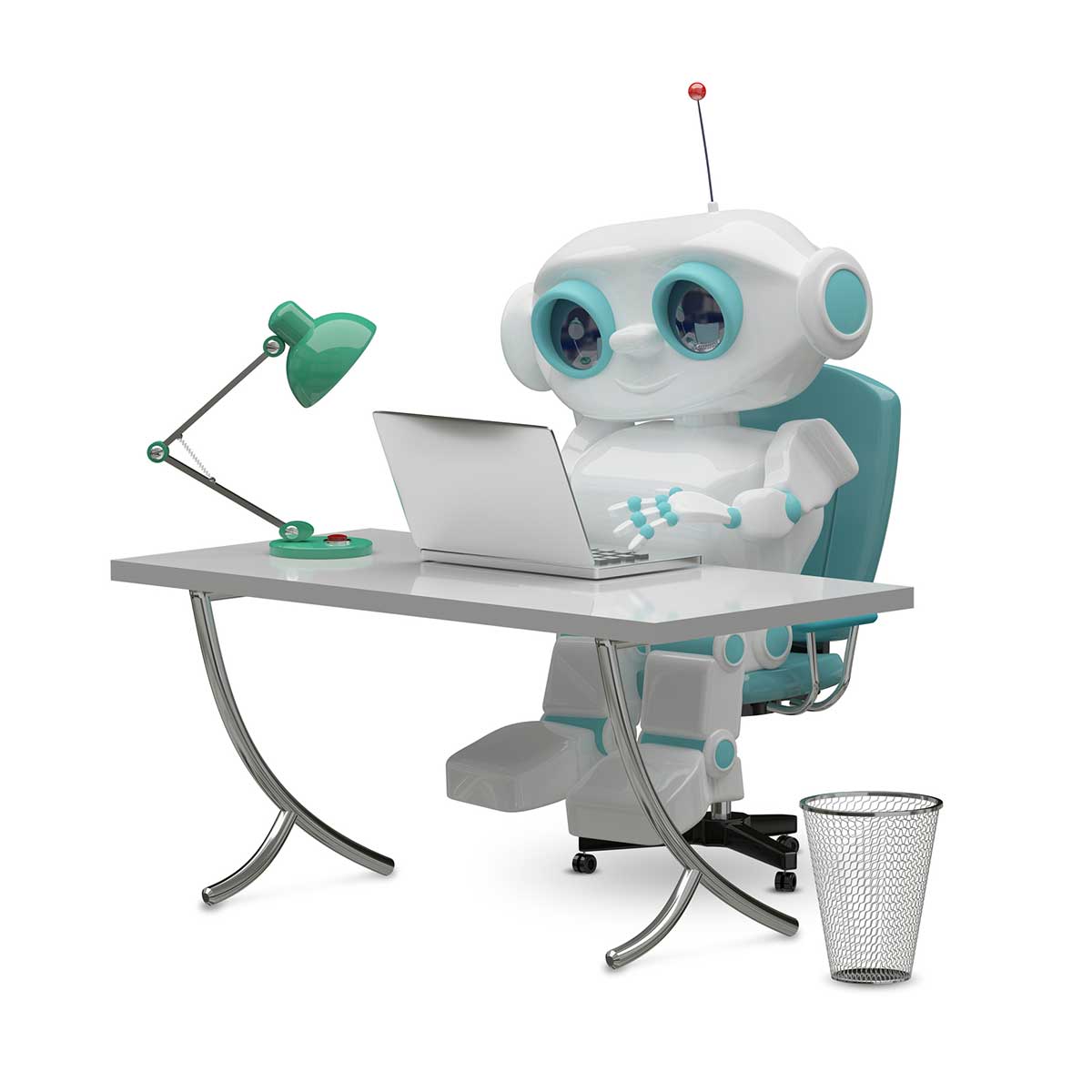

Everything You Want to Know About RPA, But Are Afraid to Ask
Date: July 20, 2018

What is Robotic Process Automation (RPA) technology?
Robotic Process Automation (RPA) is software that automates rules-based, repetitive tasks or processes. For example, rather than an accountant manually reconciling two or more sets of data and then researching any differences, RPA technology can automate the reconciliation tasks leaving the accountant with the analytical tasks of researching and understanding the differences. In other words, RPA technology can automate rules-based tasks like matching two sets of data, but it cannot help you understand why differences may exist.
Only the private sector is using RPA technology, right?
Private sector companies have been using RPA technology for several years and have reported time and cost savings as a result. Although the technology is not “new,” it’s gaining more popularity in the federal government. Although, at this writing, there are a limited number of federal agencies using RPA in a production environment, several federal agencies are carrying out proofs of concept and pilot projects to gain a better understanding of the technology and the value it may bring to their organizations.
What is a “bot”?
A “bot” is RPA software that can be thought of as a digital employee. Different licensing agreements may define bots slightly differently, but generally speaking, one bot equals 24 hours of time to perform tasks.
One “bot” equals one process, right?
No. Bots can only perform one task at a time, but can perform as many tasks possible within a 24-hour period. In other words, if one of the processes (with many tasks) takes two hours for a bot to finish, there will be 22 remaining hours where the bot can perform work.
Can a bot really be available 24 hours a day?
Although each bot does have 24 hours of availability to perform tasks, it’s recommended that you leave some work capacity (for example, 3-5 hours of available time) to allow for work surges.
What are the primary benefits to using RPA technology?
Over the course of eight months, we carried out a pilot project where we tested RPA technology on seven financial management processes. We found that the benefits mainly fell in four areas:
- Processing Time - Our pilot results showed an average of 60% improvement in the amount of time it took to finish all tasks in the seven processes. Keep in mind that processing times include the time it takes to carry out a process, but also incorporate the performance of the process's systems. If there are system delays pre-RPA, a bot will experience those same delays.
- Throughput - We found that we could increase throughput by 30 times by using bots on the seven processes we piloted. In the end, this means we created more processing capacity without adding human resources. Bots can operate 24 hours a day, seven days week, so even in the absence of processing time improvements, bots offer more capacity to perform work.
- Accuracy - RPA software performs tasks exactly as defined. So, if the bot is properly programmed and everything is working properly, you should expect 100 percent accuracy in carrying out tasks.
- Person Hours - We found that we could save almost 9,000 person hours per year by automating the seven processes from our pilot. That's equivalent to four FTEs per year. The extra time would allow staff to work on higher-value activities that often compete with the manual, labor-intensive work that accompanies these seven processes.
Now that I know what RPA is and what the benefits are, how do I start using it?
We recommend identifying some manual processes (for example, data entry, processes requiring many systems, reconciliation of data between sources) and starting with a small pilot that can be seamlessly transitioned to production (this was the approach we took). Starting small helps with the educational journey that accompanies building and maintaining RPA software.
Agencies are also encouraged to not get caught up focusing on the “best” process(es) to automate on the first try. The knowledge we gained during our pilot helped us understand how to identify and evaluate candidate processes going forward.
How expensive is RPA software?
It depends. Pricing and licensing arrangements vary across RPA provider. Vendors offer different pricing structures, bundling options, and discounts based on the number of bots purchased. Choosing an RPA software provider will depend on many different factors such as how many bots your agency plans to deploy, how quickly you plan to scale, and the types of processes that are being automated.
What are some examples of tasks or processes being automated?
Although there are many examples of financial management processes that are ripe for automation, here are a few examples from our pilot:
- Data Entry - We automated the repetitive entry of data from one system to another.
- Email scraping - We automated the extraction of information from email attachments and input into other systems.
- Reconciliation - We automated a process for ensuring modified budget information showed the requested changes.
- Form Validation - We automated two processes that help ensure data are correctly input into forms we get from customers.
How will the bots access systems and applications?
This is one area where there may not be a “one size fits all” approach to how agencies approach this issue. Since bots are performing employee processes, they will often need credentials. One approach is to credential a bot through the Personal Identity Verification (PIV) process. This approach allows bots to access email and other systems that require users to be in an agency’s Active Directory. Other credentialing approaches, such as with accessing systems and applications with usernames and passwords, may be appropriate when an Active Directory is not required.
Are there criteria that can help me assess whether RPA is a right fit for a process?
Here are some factors to consider when determining if RPA is a good fit:
- Process Documentation. There is a fair amount of process mapping that occurs when developing a bot, so the better your processes are documented the less time you will need to spend identifying and documenting your current state.
- Number of Systems/Applications. Bots can be programmed to perform tasks within and between systems and applications. RPA may offer greater benefits as the number of systems and/or applications used within a process increases.
- Process Complexity. The complexity of a process increases the time and knowledge required for developing the bot. Although you don’t need to be a seasoned developer to program a bot, bot developers will need to have some technical skills to develop, test, and deploy a bot.
- Business Rules. Business rules in the process must be clear and not include many exceptions.
- Operational Risk. If you automate a process that carries operational risk, then having a back-up plan in place will be necessary if the bot "breaks" in the event of some unforeseen issue (for example,, system upgrade, change in process).
This all sounds great.....so what are you telling me?
Once you move a bot into production, unfortunately, you can’t just walk away. There are several things to consider when you move a bot into production that will likely require a dedicated team of people that are devoted to:
- Process Intake. Identifying and prioritizing future processes for automation
- Building and Operating. Building, testing, and deploying bots and training staff to carry out these functions
- Monitoring. Monitoring bots to ensure they are being used to capacity as well as escalating any issues that may arise
- Change Management. Managing changes to bots because of system changes, RPA software upgrades, and training of staff
